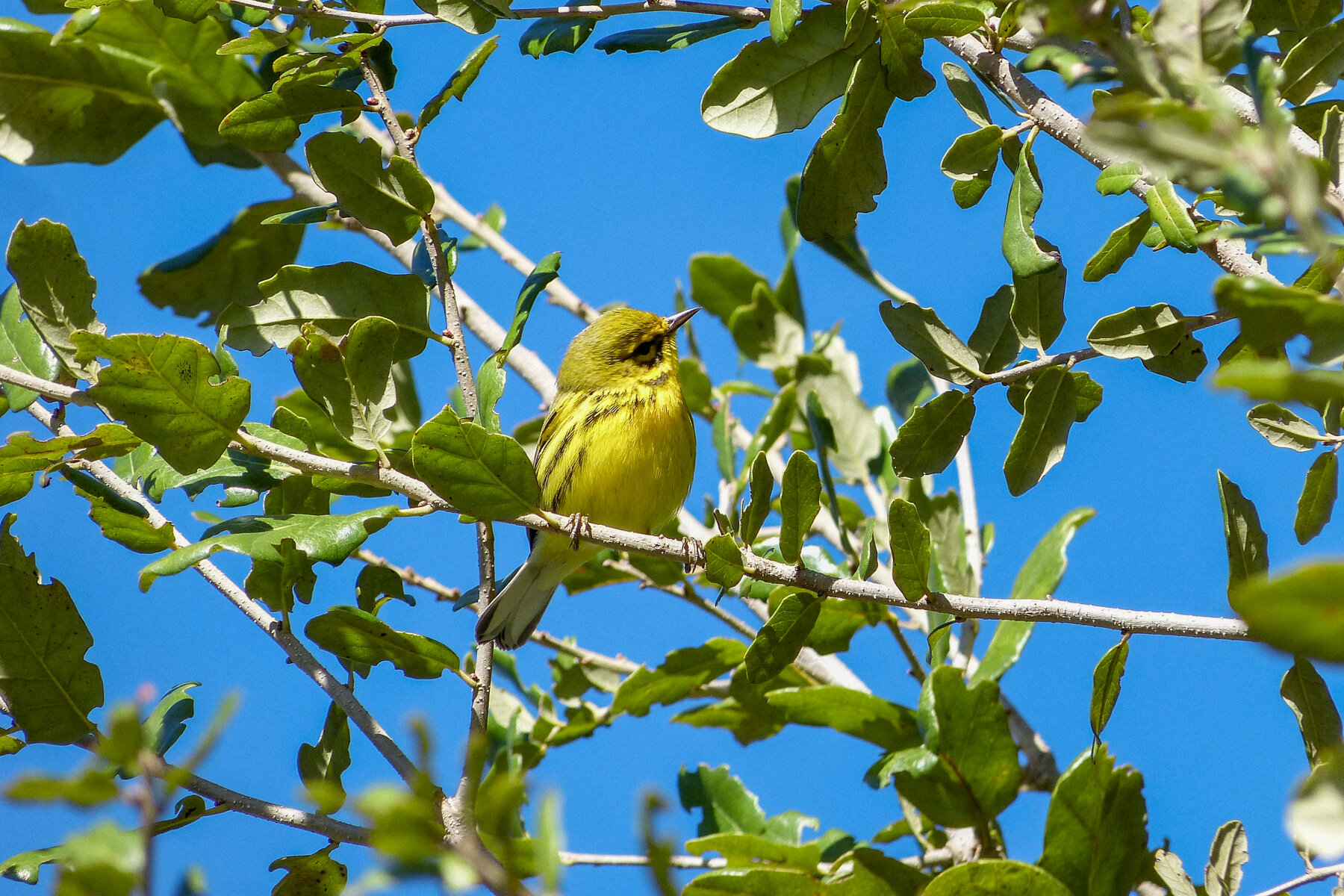Bird Walk Wrap-Up: Kendall Indian Hammocks, February 2020
Bird Walk Leader: Eliana Ardila, Images by Ana Lima
As luck would have it, the previous night’s torrential rain faded out by morning and the birds were ready to give us a show. For the sunrise of our February walk through Kendall Indian Hammocks Park, the day broke with crisp cool temperatures in the 50’s °F with a moderate breeze. Thirty-two birders showed up eager to immerse themselves into Miami’s nature — WOW, a new record high attendance for Phoebes’ guided bird walks! Things really seem to be rocking for our group!
Thirty-two Phoebes showed up for our walk at Kendall Indian Hammocks Park!
The first “heard” bird of the day was a Blue-Gray Gnatcatcher that gave its characteristic thin nasal “speeee”. Coincidentally, or maybe as fate would have it, the first bird the group *saw* was an Eastern Phoebe, silhouetted and perched on a fence — our namesake bird. How appropriate — and we were able to identify it in low light conditions, simply by shape, size, and behavior. Tail wagging is a big clue for this flycatcher species.
Eastern Phoebe
We meandered through the groves of oaks which were chock full of Northern Parulas and Blue-Gray Gnatcatchers. The group got great looks at a very handsome Yellow-throated Vireo and a striking perched Merlin. Several strangler figs were fruiting which made for excellent feeding conditions for wintering migrants. It was one bird after another, and things really got exciting when a very cooperative male Black-throated Green Warbler popped out for our audience. The group was having lots of fun and everyone helped to spot birds, find the birds in the field guide and teach other tips for ID’ing the birds.
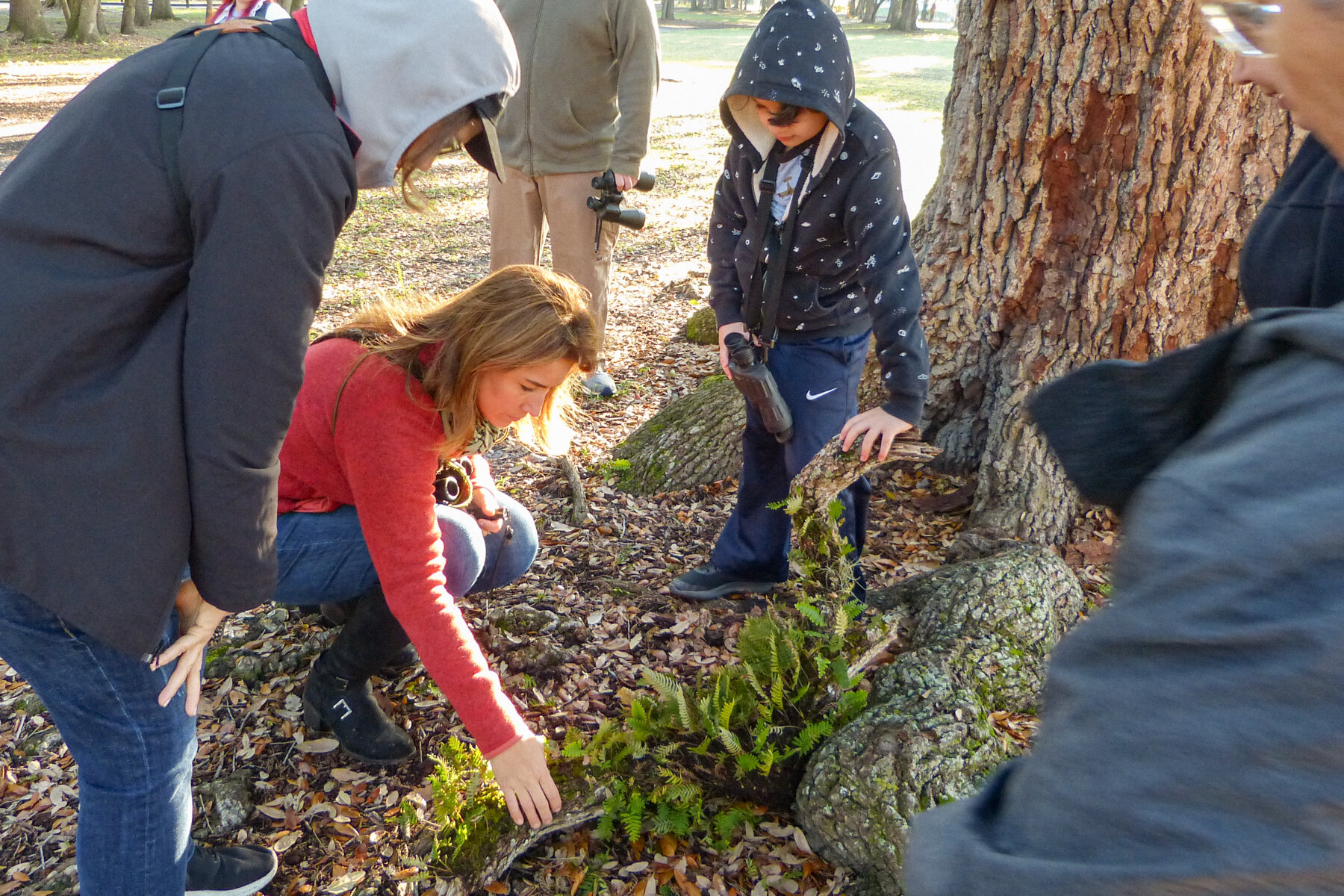
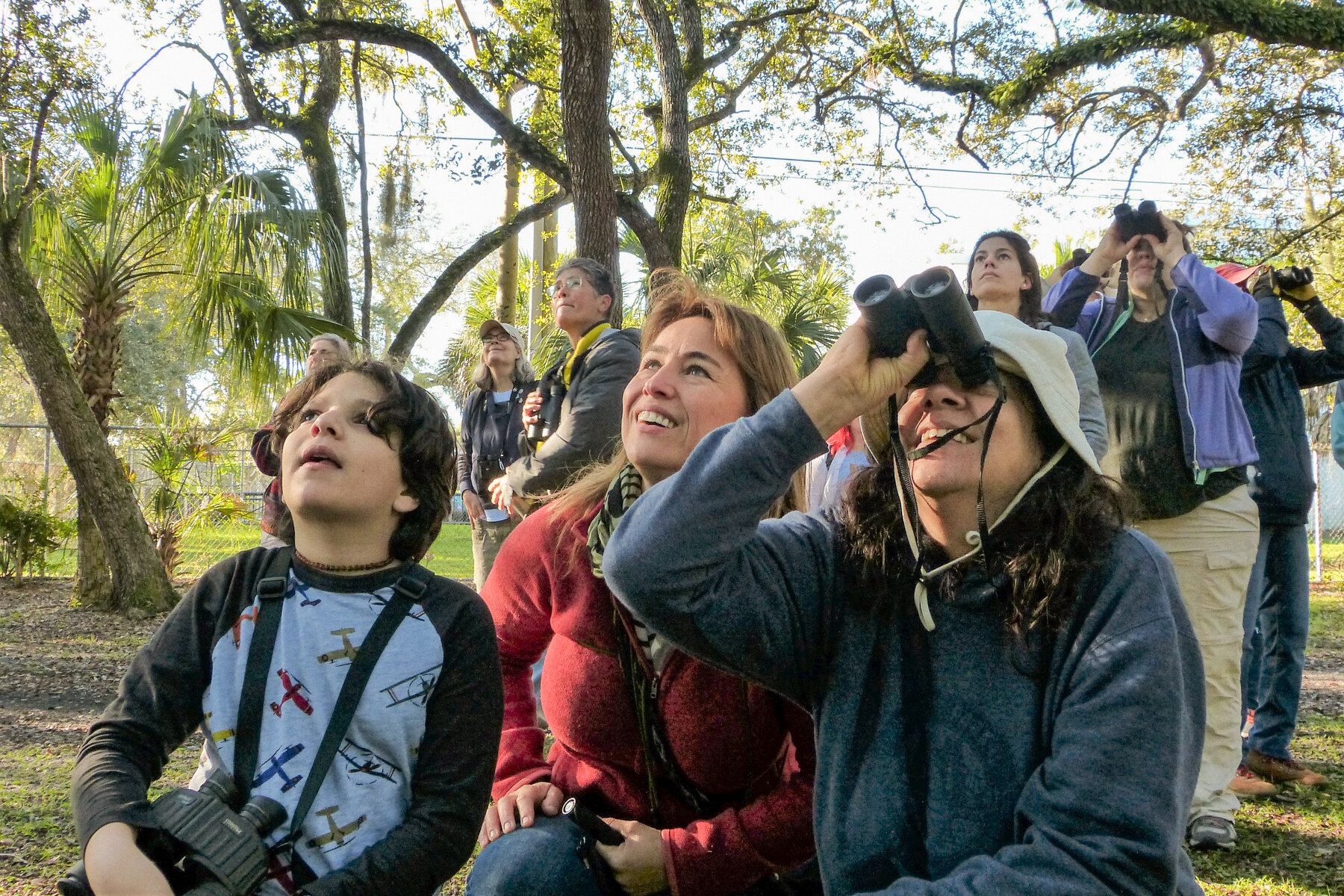
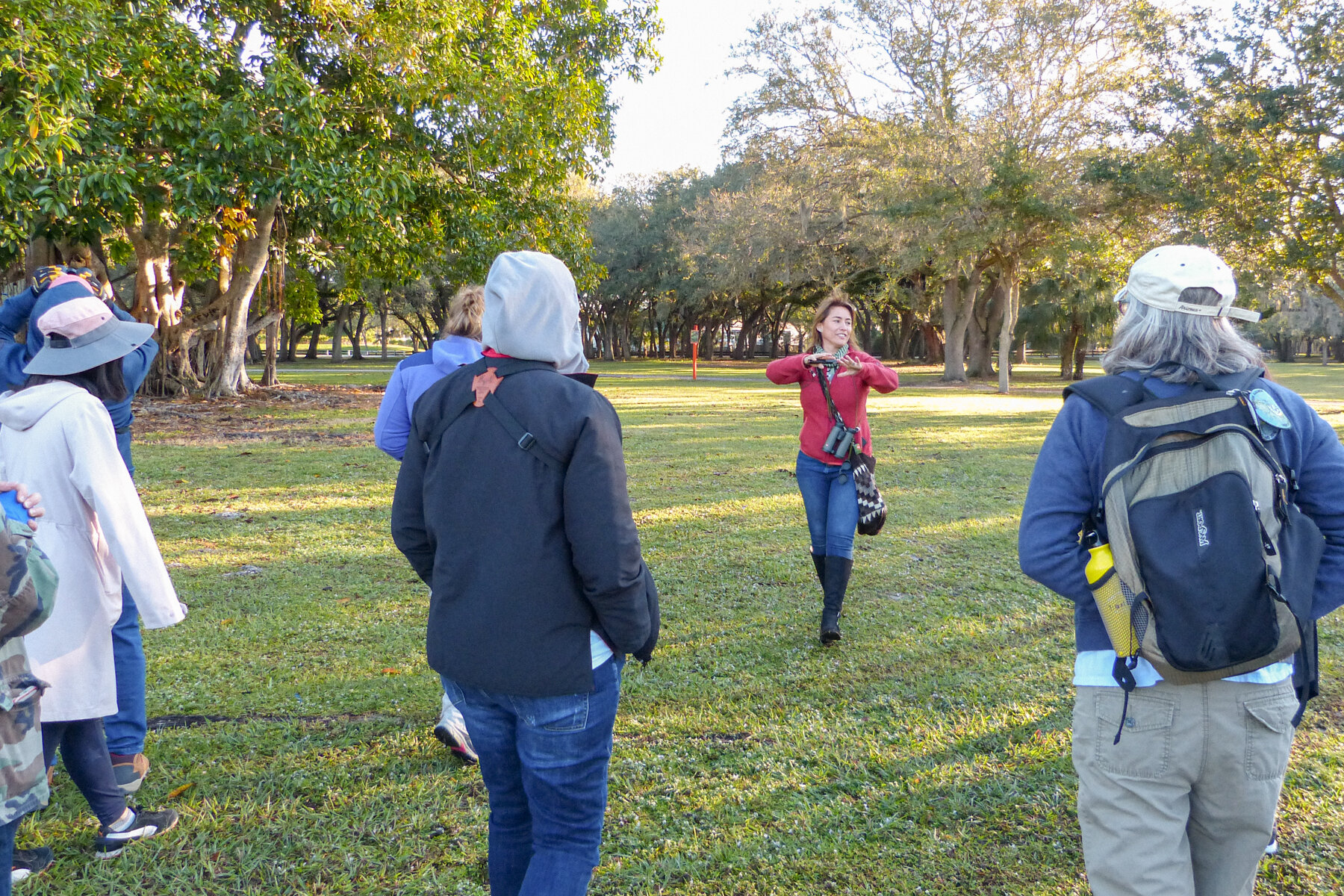
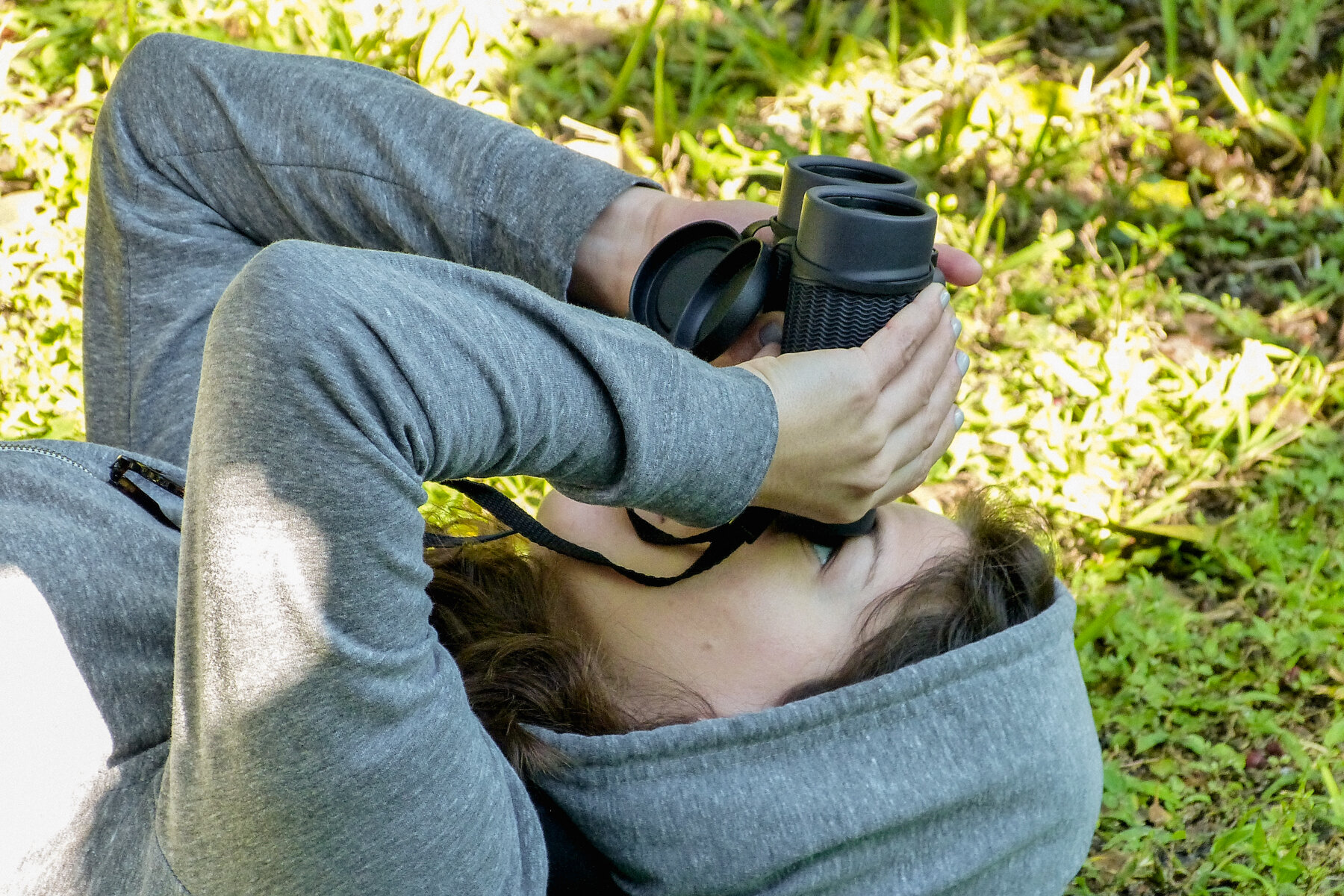
Several new birders and our leader for the walk, Eliana Ardila Kramer, were super excited to get close views of cooperative White-crowned Pigeons. Although we were a rather sizable group, we all stayed together and worked as a team. We observed many stray cats in the park, as well as a deceased Eastern Screech-Owl found on the ground, and we discussed the benefits of keeping cats indoors.
White-crowned Pigeon
So many locals, both new and regulars, were all inspired about birding, native plants, and protecting our South Florida ecosystems. A big win for the Phoebes and for everyone that attended! We left with a total of 42 species of birds for the morning and lots of motivation to restore native habitats.
Prairie Warbler
Birds We Saw
42 species of birds were seen in total:
Rock Pigeon (Feral Pigeon) (Columba livia (Feral Pigeon))
White-crowned Pigeon (Patagioenas leucocephala)
Eurasian Collared-Dove (Streptopelia decaocto)
White-winged Dove (Zenaida asiatica)
Mourning Dove (Zenaida macroura)
Ruby-throated Hummingbird (Archilochus colubris)
Laughing Gull (Leucophaeus atricilla)
Ring-billed Gull (Larus delawarensis)
Great Egret (Ardea alba)
Cattle Egret (Bubulcus ibis)
White Ibis (Eudocimus albus)
Black Vulture (Coragyps atratus)
Turkey Vulture (Cathartes aura)
Osprey (Pandion haliaetus)
Cooper's Hawk (Accipiter cooperii)
Short-tailed Hawk (Buteo brachyurus)
Yellow-bellied Sapsucker (Sphyrapicus varius)
Red-bellied Woodpecker (Melanerpes carolinus)
American Kestrel (Falco sparverius)
Merlin (Falco columbarius)
Monk Parakeet (Myiopsitta monachus)
Eastern Phoebe (Sayornis phoebe)
Yellow-throated Vireo (Vireo flavifrons)
Blue-headed Vireo (Vireo solitarius)
Blue Jay (Cyanocitta cristata)
Fish Crow (Corvus ossifragus)
Blue-gray Gnatcatcher (Polioptila caerulea)
European Starling (Sturnus vulgaris)
Gray Catbird (Dumetella carolinensis)
Northern Mockingbird (Mimus polyglottos)
Cedar Waxwing (Bombycilla cedrorum)
House Sparrow (Passer domesticus)
Red-winged Blackbird (Agelaius phoeniceus)
Black-and-white Warbler (Mniotilta varia)
Northern Parula (Setophaga americana)
Palm Warbler (Setophaga palmarum)
Yellow-rumped Warbler (Myrtle) (Setophaga coronata coronata)
Yellow-throated Warbler (Setophaga dominica)
Prairie Warbler (Setophaga discolor)
Black-throated Green Warbler (Setophaga virens)
Northern Cardinal (Cardinalis cardinalis)
Painted Bunting (Passerina ciris)



